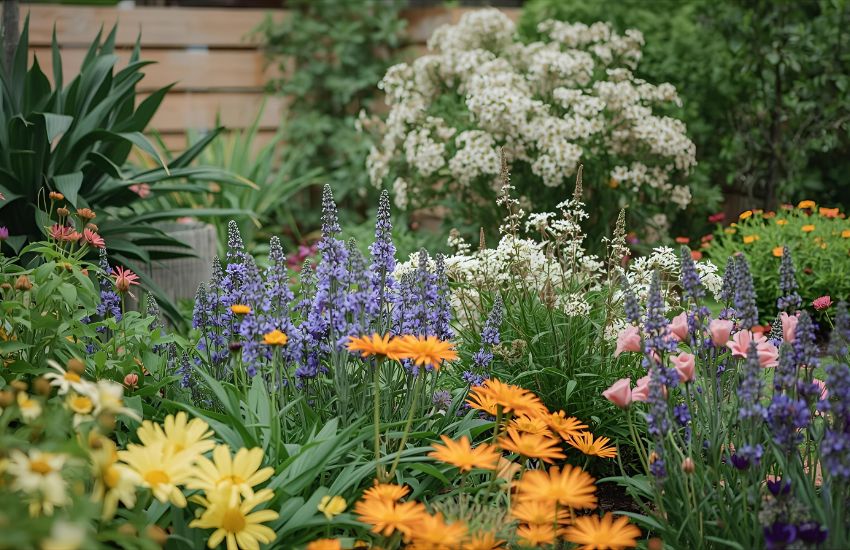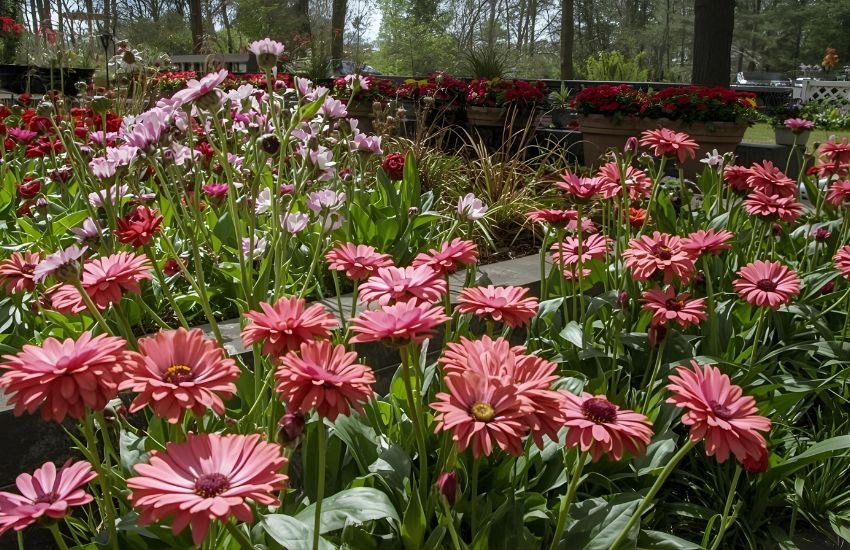Every garden lover knows that nurturing outdoor flowers requires more than just planting seeds and waiting for them to bloom. To truly enjoy a vibrant garden bed filled with colorful blossoms, you need to understand the delicate balance of watering, fertilizing, and pruning your plants throughout the growing season. Proper care involves timely deadheading to encourage fresh blooms and knowing when to cut back foliage or shrubs to maintain healthy growth.
To care for outdoor flowers successfully, you need to focus on proper planting, regular watering, timely fertilizing, and pruning. Deadheading spent blooms and managing weeds also help maintain healthy growth. Understanding these basics ensures your garden flowers bloom beautifully throughout the growing season.
Whether you favor the delicate charm of tulips and daffodils or the robust presence of peonies and sunflowers, managing the care of annual and perennial flowers demands attention to soil quality, composting, and mulching. Weed control and protecting buds from harsh conditions are equally important to sustain season-long beauty.
In this guide, you will discover practical advice on planting, watering techniques, fertilizing, and pruning that will help your flowers thrive. You will also learn essential tips for deadheading spent blooms and caring for different types of plants in pots or garden beds. By the end, you’ll be equipped to foster a flourishing garden that delights you throughout every season.
How to Plant and Water a Healthy, Blooming Outdoor Flower Garden

Creating a flourishing flower garden requires careful planning and consistent care of flowers to ensure vibrant blooms throughout the season. Whether you are selecting flowers at garden centers or mixing desirable plants in raised beds, following the right steps for planting and watering is essential for success.
Planning Your Garden and Selecting Flowers
Start by planning your garden layout, considering bloom times and plant compatibility. Incorporate a variety of flowers such as tulips and daffodils for early spring color, garden phlox and salvias for midsummer interest, and mums and asters for late-season blooms. Annual flowers like marigold and zinnias can add continuous color, as they complete their life cycle within one season. This diversity allows you to enjoy flowers throughout different periods, creating a dynamic and engaging garden space.
Preparing the Soil and Planting
Choose well-draining soil, especially if you have sandy soil or raised beds, to prevent waterlogging and root wilt. Amend the soil with compost or slow-release fertilizers like Osmocote to provide steady nutrients. When planting bulbs such as hyacinth or crocus, do so in spring or fall for optimal growth. For flower beds, avoid overcrowding to ensure new growth and proper air circulation, which helps in battling disease and pest infestations such as spider mites or whitefly.
Watering Techniques for Healthy Growth
Water your flower garden deeply but infrequently to encourage strong root development. During dry weather, regular watering is crucial, but avoid wetting the foliage excessively to reduce the risk of powdery mildew and other fungal diseases. Applying neem oil can help manage pests and diseases without harming beneficial insects in your garden. Adjust watering frequency depending on the season; cooler months require less water as plants enter dormancy.
Top Flower Garden Tips: Fertilizer, Deadheading, and Pruning Essentials

When planning your garden layout in raised beds, ensure you use a well-draining soil mix to prevent wilt and promote healthy root development
Apply slow-release fertilizer in spring or fall to supply steady nutrients for each bloomer, such as marigold, zinnias, salvias, garden phlox, and mums and asters, supporting robust growth
Regular deadheading removing spent flowers helps you encourage new flowers and form fresh flower buds while guiding you how to grow flowers that rebloom continually
Prune lightly to prevent spindly stems and improve air circulation, which is crucial for battling disease from spider mites and whitefly without harming beneficial insects
Inspect plants for early signs of wilt or pest damage and treat promptly with neem oil to maintain proper care of flowers and safeguard their health
Rotate your plantings between annuals and perennials in raised beds to enjoy blooms at different times and disrupt pest and disease cycles
In dry weather, adjust your watering schedule to maintain consistent moisture and protect fragile flower buds from stress
Conclusion
Caring for an outdoor flower garden involves a thoughtful balance of planning your garden, planting with care, watering properly, and maintaining your plants through fertilizing, deadheading, and pruning. By selecting the right flowers from early bloomers like tulips and daffodils to vibrant annuals such as marigold and zinnias and providing well-draining soil in raised beds, you create ideal conditions for healthy growth and season-long beauty. Managing pests like spider mites and whitefly, along with battling disease through attentive care and treatments like neem oil, further supports your garden’s vitality.
With consistent attention to these essential practices, you can enjoy a flourishing flower garden filled with continuous blooms, fresh flower buds, and resilient plants that brighten your outdoor space throughout the growing season.
Start planning your garden today and put these expert tips into action to transform your flower garden into a thriving, colorful haven. Your vibrant and healthy garden awaits embrace the care of flowers and watch your blooms flourish!
Frequently Asked Questions (Everything You Need to Know About Outdoor Flower Care for Garden Lovers)
How to take care of flowers in a garden?
To take care of flowers in a garden, provide them with proper sunlight, water regularly without overwatering, and enrich the soil with compost or fertilizer. Remove weeds, prune dead blooms, and protect from pests. Seasonal care ensures healthier growth, vibrant colors, and longer-lasting blossoms.
How to take care of your outdoor plants?
To take care of outdoor plants, water them consistently based on weather, ensure proper sunlight, and use nutrient-rich soil. Mulch to retain moisture and control weeds. Prune damaged leaves, check for pests, and fertilize seasonally. Regular attention helps plants stay strong, vibrant, and healthy year-round.
What is the most common outdoor flower?
The most common outdoor flower is the marigold, loved for its bright yellow, orange, and red blooms. It’s easy to grow, thrives in various climates, and naturally repels pests. Marigolds add vibrant color to gardens, making them a popular and reliable choice for outdoor planting.
How to encourage flowering plants outdoors?
To encourage flowering plants outdoors, provide them with full sunlight, nutrient-rich soil, and consistent watering without waterlogging. Use a balanced fertilizer high in phosphorus, deadhead spent blooms, and prune regularly to promote new growth. Protect from pests and ensure proper spacing for airflow to maximize healthy flowering.
